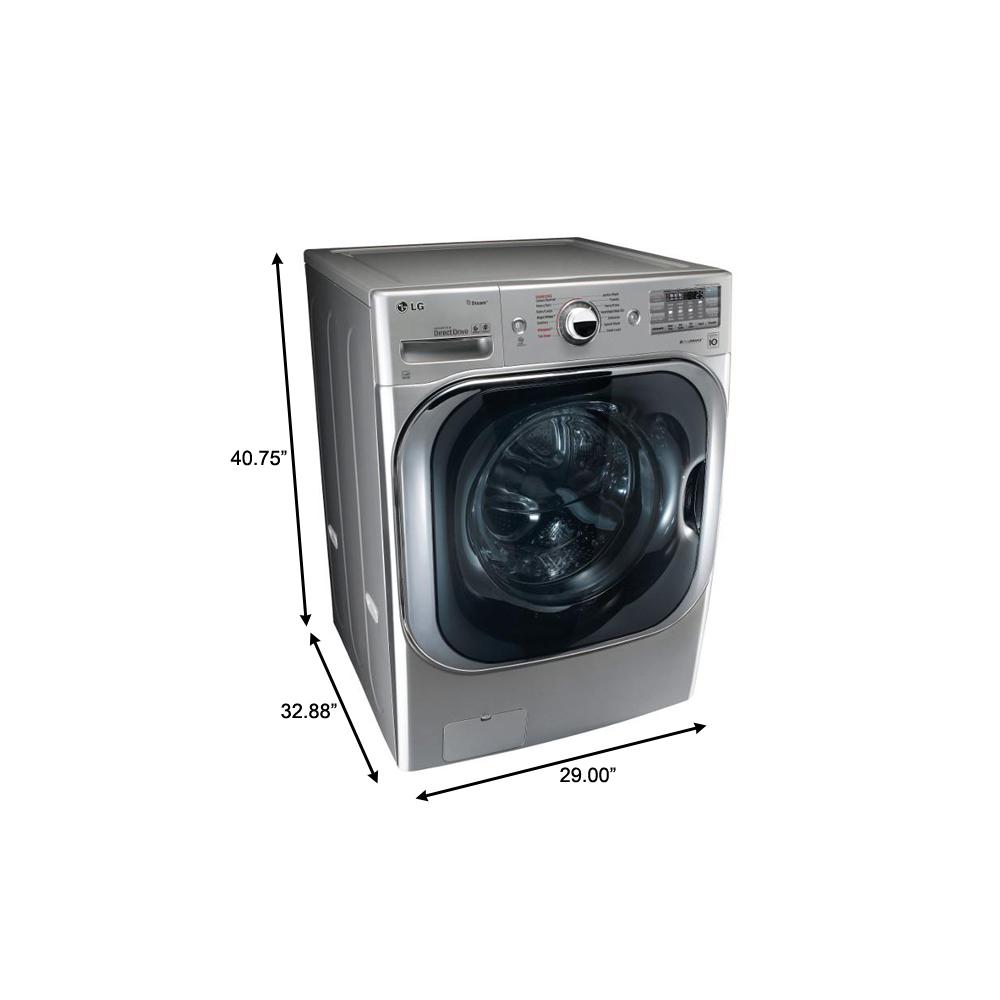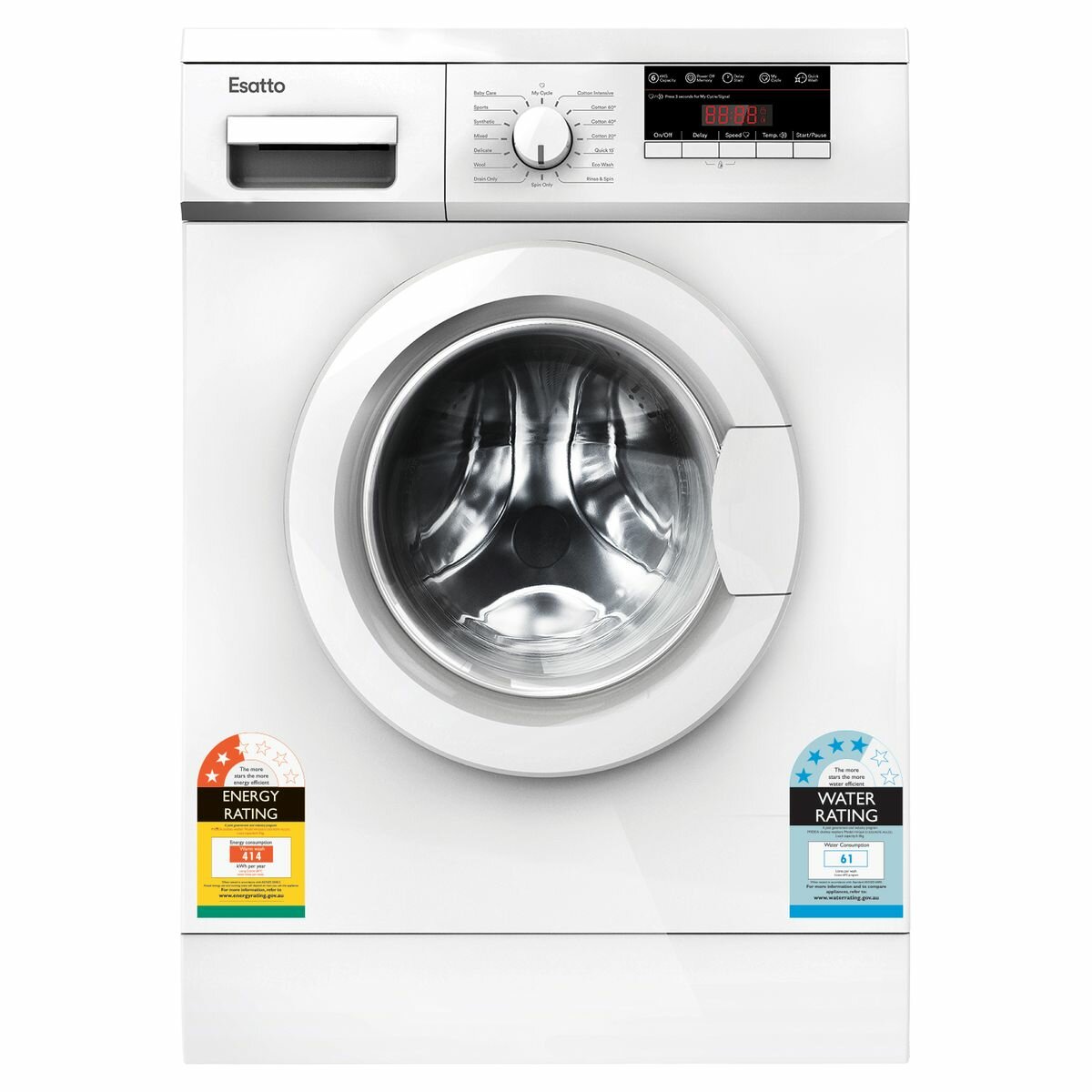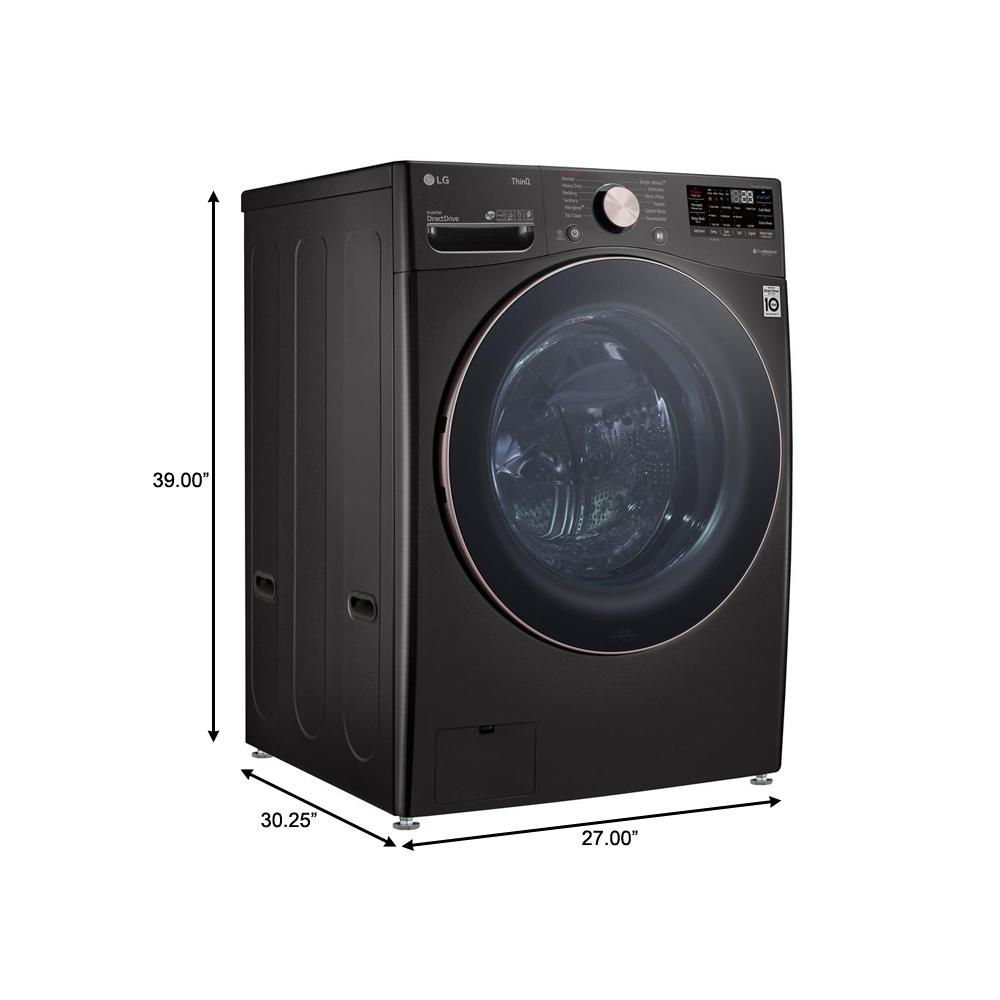LG Electronics 5.2 cu. ft. High Efficiency Mega Capacity Front Load Washer with Steam and TurboWash in Graphite Steel, ENERGY STAR
Save up to 30 minutes per load with new LG TurboWash Technology. Stackable w/ LG washer/dryer set & SideKick pedestal compatible. Steam washing machine eliminates dirt, odor, stains, and wrinkles.
Imagine being able to wash a king size comforter and a full set of bedding in a single load. And just think how much more amazing this would be if you could tackle a regular load of laundry 20 minutes faster. Stop imagining and go for it. LG takes the industry’s largest capacity washer and powers it to the max with time-saving TurboWash technology and a steam cleaning feature that virtually eliminates dirt, wrinkles and odors.
-
The largest capacity washer available at 5.2 cu. ft., you can fit a comforter and full set of king size bedding in a single load
- Electronic control panel with dual LED display and dial-a-cycle makes selecting the right easy
- LG’s revolutionary Turbowash technology allows you to wash larger loads 20 minutes faster, with outstanding cleaning performance
- Awarded the 2015 ENERGY STAR most efficient designation
- Each wash cycle combines up to 6 different wash motions to provide a revolutionary cleaning experience with 6Motion technology
- 14 wash cycles, including AAFA- Certified Allergiene, NSF-certified sanitary and hand wash/wool
- Cold wash technology uses cold water and enhanced washing motions to deliver cold-water saving with a warm-water performance
- Saving energy doesn’t have to mean compromising on cleaning with the ColdWash option; powered by the LG Direct Drive Motor and 6Motion technology, it’s ideal for cleaning all types of clothes – even those you normally wash in warm water; can be used with almost any wash cycle and virtually all fabric types
- Steam technology deeply penetrates fabrics to know out dirt and reduce wrinkles and odors while it also uses less water than traditional washers, so you won’t take a bath on your bills
- Allergiene cycle helps remove more than 95% of common household allergens, including dust mites and pet dander, helping to improve clothing hygiene
- Truebalance anti-vibration system is designed to minimize washer vibration for smooth, quiet performance in any room of the house – even on the 2nd floor
- The sense clean wash system sets the water and wash time automatically based on the weight and size of each load for optimal washing care
- Washer requires use of only high-efficiency detergent, typically two tablespoons per load
- The Home Depot will not hook up your washer with used fill hoses; new fill hoses will be offered during appliance checkout
- ENERGY STAR qualified to meet or exceed federal guidelines for energy efficiency for year-round energy and money savings
- Inverter DirectDrive Motor is backed by a 10-year limited warranty
- Capacity to wash as many items of clothing as the tub allows; as long as the lid shuts and locks, it will wash
- LG offers a lifetime warranty on the drum. All compatible LG washers, dryer, SideKick pedestal washers, and laundry pedestals sold separately
- Stackable design lets you stack the washer with matching dryer and optional stacking kit (not included) for a complete laundry set-up
Additional information
| Capacity - Washer (cu. ft.) | 5.2 |
|---|---|
| Depth With Door Open 90 Degrees (In) | 57.5 |
| Door Opening Height x Width (In.) | 16.93 x 16.93 |
| Product Depth x Height x Width (in.) | 32.88 x 40.75 x 29 |
| Certifications and Listings | UL Listed |
| Manufacturer Warranty | 1 Year Warranty: Parts and Labor, In-Home, 10 Years: Direct Drive Motor, Limited Lifetime: Stainless Steel Drum |






by Mike
Happy wife happy life. She loves it. Extremely quiet compared to the last one
by Phil
Great washer. Cleans well. Controls Vibration well. Sound loudness is good and better than our previous LG washer. We like the happy tones it makes when the loads are done. Being able to put larger loads into the washer is great. We chose not to have a floor pedestal below to put cabinets above it. Only gave it a 4 out of 5 stars because the water in the door does not fully drain out so when you open the door it drips out a small amount of water every time after use. It does not leak while operating.
by Rob
Great washer beautiful to look at also.
by Chris
I am very happy with this dryer. I purchased it to pair the washing machine since these appliances are visible from my kitchen. Although, I have only had this for a few weeks, I’m very satisfied with my purchase thus far.
by Lisa
This dryer is awesome! Takes no time to dry and my clothes come out wrinkle free (even when it’s at max capacity!!!) So glad we chose this washer and dryer set!
by Lefers
Works great for me! So happy I got the 29″ LG WM8100HVA & DLEX8100V set. I got the WD200CV Sidekick & WDP5V pedestal drawer to match. I purchased this set to replace an old Kenmore top load set we purchased in 2002. What a huge difference! Wish I would’ve done it sooner… amazing at how much better this unit dries my clothes and larger items (like blankets and washable rugs)! Everything dries faster than it did in my old set and I usually set this unit on medium and that is more than enough heat to dry a large load is less than an hour (keep in mind the more heat, the more electric it will use so you’ll see it in your energy bill). Before I was having to run the old Kenmore dryer on high for 1-1/2 to 2 cycles of 70 min to get a larger load dry. This new unit has saved me so much time, and it’s definitely much easier on the clothes being on a slightly lower temp and being in there for less time. I’ve had the set for just over 6 months and no issues at all with dryer sheets sticking to the vent, or rust on the surface inside the unit. It really is a great dryer! Does really well on energy efficiency as well, hardly effects my usage at all which is awesome so it doesn’t make my electric bill go thru the roof. As for the steam function, I purchased this not realizing this wasn’t the same model I was expecting, and it wasn’t going to be plumbed in with the washer set. It’s a manual feature with a water tray drawer next to the control panel. It works fine really, but can be tedious if you have to add more water while using it. I did it with a couple non-washable rugs, and they came out beautifully refreshed so it functioned how it was meant to. I just had to add water a couple of times. Maybe cause it was the first time I added water to the machine? Either way for the minimal use of the steam feature, I’m OK with having to do that. All in all, it’s a solid unit and I would highly recommend it! If I had to buy again, I would choose this model in a heartbeat!